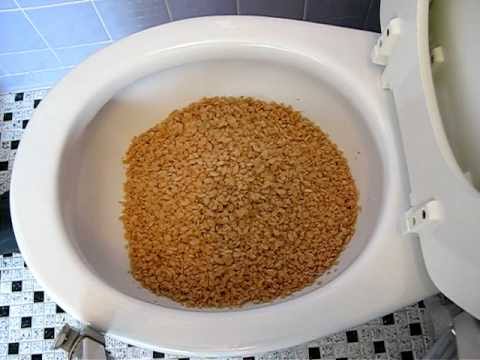Is it Permitted to Dispose of Food in the Toilet?
Is it Permitted to Dispose of Food in the Toilet?
Blog Article
Were you interested in selective information on Think Twice Before Flushing Food Down Your Toilet?

Intro
Many people are usually confronted with the predicament of what to do with food waste, specifically when it comes to leftovers or scraps. One usual concern that develops is whether it's alright to purge food down the bathroom. In this short article, we'll delve into the reasons that people could think about purging food, the repercussions of doing so, and alternative techniques for correct disposal.
Reasons why people may take into consideration flushing food
Lack of understanding
Some people might not know the possible harm triggered by flushing food down the bathroom. They may wrongly believe that it's a harmless method.
Comfort
Flushing food down the toilet might feel like a fast and simple service to disposing of undesirable scraps, particularly when there's no close-by garbage can offered.
Laziness
In some cases, people might merely choose to flush food out of large negligence, without taking into consideration the effects of their activities.
Repercussions of flushing food down the toilet
Ecological impact
Food waste that ends up in waterways can add to contamination and damage marine environments. In addition, the water utilized to flush food can strain water sources.
Plumbing issues
Flushing food can cause clogged up pipelines and drains, triggering expensive pipes repairs and troubles.
Kinds of food that ought to not be purged
Fibrous foods
Foods with coarse structures such as celery or corn husks can get entangled in pipes and create obstructions.
Starchy foods
Starchy foods like pasta and rice can soak up water and swell, bring about clogs in pipes.
Oils and fats
Greasy foods like bacon or food preparation oils must never ever be purged down the toilet as they can strengthen and cause clogs.
Correct disposal approaches for food waste
Making use of a garbage disposal
For homes equipped with waste disposal unit, food scraps can be ground up and purged through the plumbing system. Nevertheless, not all foods appropriate for disposal in this fashion.
Recycling
Certain food packaging materials can be reused, lowering waste and minimizing environmental influence.
Composting
Composting is an eco-friendly way to take care of food waste. Organic products can be composted and made use of to enhance soil for horticulture.
The value of proper waste administration
Minimizing ecological damage
Appropriate waste management methods, such as composting and recycling, aid reduce contamination and preserve natural deposits for future generations.
Safeguarding pipes systems
By preventing the technique of flushing food down the commode, house owners can avoid costly pipes repair work and preserve the honesty of their pipes systems.
Final thought
Finally, while it may be tempting to purge food down the bathroom for convenience, it is necessary to recognize the possible consequences of this activity. By embracing proper waste administration practices and disposing of food waste sensibly, people can contribute to much healthier pipes systems and a cleaner environment for all.
FLUSH FOOD DOWN THE TOILET?
FLUSHING FOOD CAN CAUSE BLOCKED DRAINS IN YOUR HOME
All of the plumbing fixtures in your home are connected to the same sewer pipe outside of your home. This outdoor sewer pipe is responsible for transporting all the wastewater from your home to the Council sewer mains. Even small pieces of food that go down the kitchen sink can cause problems for your sewer. It should therefore be obvious that flushing larger bits of food, such as meat, risks a clog in either the toilet itself or the sewer pipes. Flushing greasy food is even more problematic because oil coagulates when it cools, coating the interior lining of your pipes.
THE TOILET IS NOT A BIN
Food isn’t the only thing that people shouldn’t be flushing down the toilet. People use the toilet to dispose of all kinds of things such as tampons, makeup wipes, dental floss, kitty litter and even underwear. Water goes to great lengths to educate residents about the high costs and stress placed on wastewater treatment systems simply from people flushing the wrong stuff down the toilet. It costs taxpayers millions of dollars each year, and homeowners thousands in blocked drain repairs.
FLUSHING FOOD IS A WASTE OF WATER
Flushing food is a waste of our most precious resource - water. In June this year Level 1 water restrictions were introduced to protect water supply from drought conditions. Much of New South Wales continues to be affected by prolonged drought with recent figures revealing up to 97 per cent of the state remains in drought. Depending on whether you have a single or dual flush toilet, every single flush uses between five and 11 litres of water. In the current climate this is a huge amount of water to be wasting on flushing food that should be placed in the bin (or better yet, the compost).
https://www.jabplumbingsolutions.com.au/blog/can-you-flush-food-down-the-toilet

Do you appreciate reading about ? Write a remark directly below. We'd be pleased to know your feelings about this blog post. We are looking forward to see you back again soon. Liked our blog? Please quickly share it. Help other people discover it. Thank you so much for going through it.
Click Here Report this page